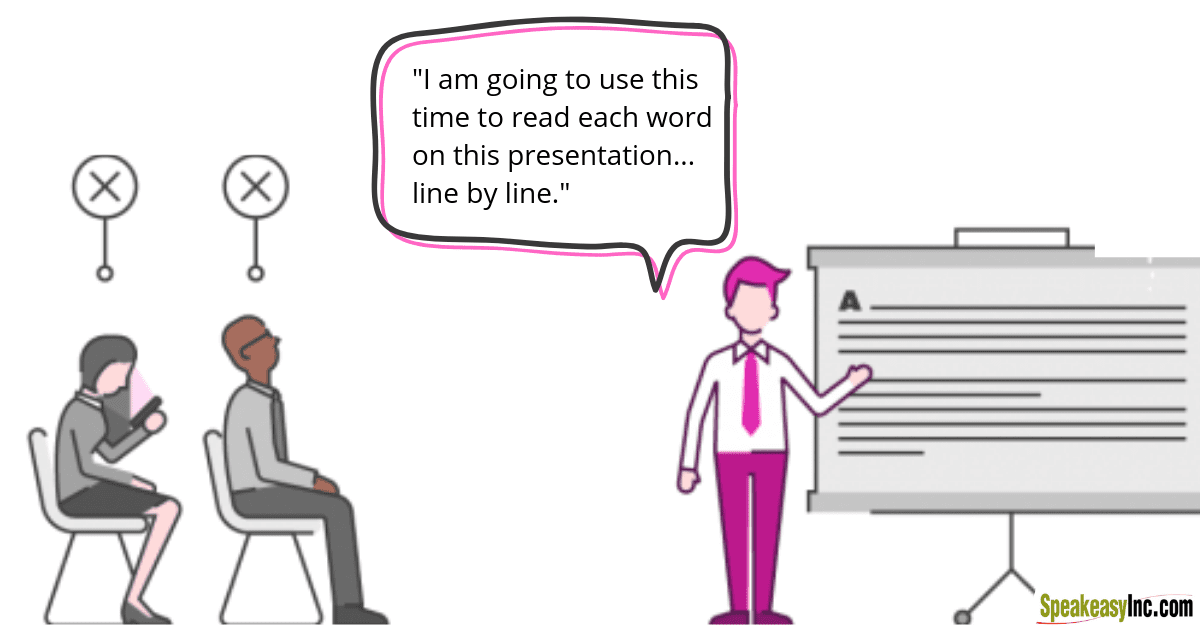
01 Nov Point the Power to YOU
Reading Time: 2 minutes
Many speakers today seem more comfortable talking to their slides than to their audience. Have you ever seen a speaker literally read every word on the slide? Then continue to do that on all 87 slides in their deck…How did that make you – as a listener – feel? Likely unstimulated and unengaged.
Despite any reservations, you may have in your capabilities, for your audience you are by far the most important part of your presentation. PowerPoint, that beautiful and brilliant visual aid that we love so much, is just that… a visual aid. It is designed to aid you, the speaker. It is designed to accompany your message, not become the message. It’s designed to support your thoughts, not steal your thunder. It’s designed to be the echo, not everything.
If you feel underprepared to deliver your part, that’s a different conversation but sticking to the best practices for maximizing PowerPoint:
Are There Benefits to Using PowerPoint Effectively?
Most definitely, however, Aaron Parson of Techwalla writes, “Used poorly, a PowerPoint presentation adds nothing to a speech, while potentially providing a distraction from the speaker.”
Consider using other resources that can help create the same effect as PowerPoint such as a flip chart, whiteboard, videos, hand-outs, group exercises to illustrate points, or my favorite… props.
Putting it into practice, Learning by Doing:
Malcolm Knowles, a pioneer in adult education, states that learning is experiential. This means that people tend to learn best doing or being able to experience something. Instead of showing a slide about the correct way to do a jumping-jack, have your audience stand and do it themselves. Learning sticks better that way and your audience gets a chance to get the blood flowing again… a 2-for-1 deal!
Amazon Founder and CEO Jeff Bezos has repeatedly banned PowerPoint in his executive meetings. So, what do they do instead? According to Bezos, rather than reading bullet points on a PowerPoint slide, everyone sits silently for about 30 minutes and reads a six-page narrative – with real sentences, topic sentences, verbs, and nouns. After everyone’s done reading, they discuss the topic.
Now, that may not be a viable option or your situation but note the merits of that route and consider an alternative to overusing PowerPoint. At Speakeasy we’ve found when given the opportunity, PowerPoint becomes the literal script and/or teleprompter for speakers. People tend to recycle the same PowerPoint for years in many different talks with hardly an image update or tweak to appropriately address the situation at hand. Unfortunately, PowerPoint has evolved into a “shield” that speakers “hide behind.”
Trust us, your audience wants more than just slides. They want you. If it were just about the information on the screen, you could have easily sent an email. The fact that you were chosen to deliver this presentation should mean something and you should respond accordingly.

